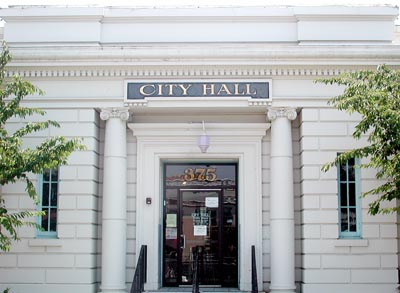Hollister’s new mayor, Ignacio Velazquez, needs to have the city staff put together a four-year organizational, fiscal, and economic plan because two years is not long enough to map out, implement, and evaluate effective changes.
I was an enthusiastic supporter of the city’s change from five districts to a four-district city council with an at-large mayor. I liked the idea so much I ran for the office myself. Prior to the election the citizens, unfortunately, voted to give the new position a two-year term – weakening the office in relation to the four-year terms enjoyed by other council members. This could tempt them to try to wait out the mayor if they do not like his or her ideas. The two-year term also established a de facto, and unrealistic, timeline for any incumbent.
The mayoral position was never, “just one vote like all the others.” It was obvious; all the candidates saw it as the leadership position – that’s why the word leadership showed up so many times during the election campaign. Some of the reasons the citizens selected a two-year term appear to be that they were nervous about the change and who might win the job. There was also the opportunity for more accountability; the mayor would have to face a voter report card every two years. However, running for office, even reelection, takes time and energy better spent addressing the city’s problems. In my opinion, the proven disadvantages of a short term far outweigh any theoretical pluses.
Government moves like a glacier – slow but relentless. Once it starts in any direction, trying to alter its course is a time consuming process under the best of circumstances; therefore, change will be very slow and incremental. There are political, practical and legal issues that all work to make change difficult, and two years is simply not enough time to do the job.
One way for Mayor Velazquez to gain public patience and breathing room is to assume he will be reelected and have the staff put forward a workable four-year plan; not a two-year plan that has little chance of success due to its compressed timeline.
We need to set measureable goals and milestones, but they need not be restricted to cuts; getting more government services for the taxpayer’s buck is also a worthy objective. City residents have to deal with the total cost of living, which includes charges for trash, sewer, water, property taxes including special districts, and a host of other fees. The city has to pay as much attention to controlling consumer costs for enterprise operations as they do for general fund expenses, because it all adds up.
The most likely time span necessary for recovery and significant improvement is best defined by Measure E’s five-year lifespan. We are unlikely to be out of the woods before then. The real danger is that without a long-term plan, everyone will get comfortable again and do little or nothing to deal with the structural deficit. That’s what happened with Measure T and we are paying for the lack of a comprehensive plan in higher taxes, increased fees, high unemployment and economic stagnation.
The city cannot afford to waste another five years; nor can we operate effectively with a two-year horizon. Mayor Velazquez and the city council should charge the city staff with producing a comprehensive four-year fiscal plan that goes a lot further than merely doling out the available revenue.
Marty Richman is a Hollister resident.










